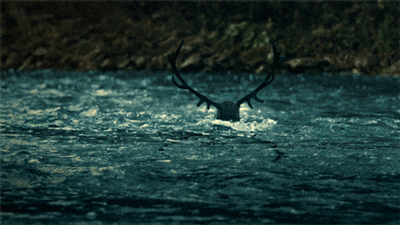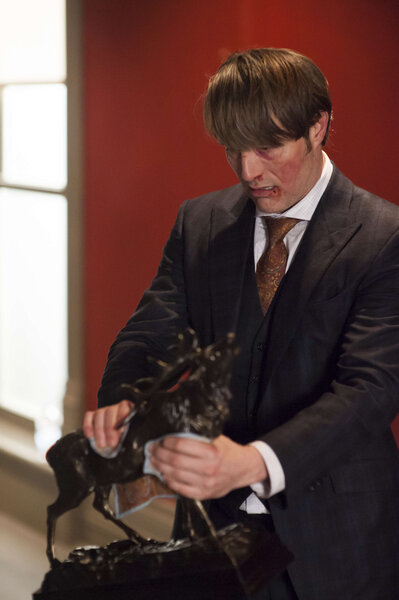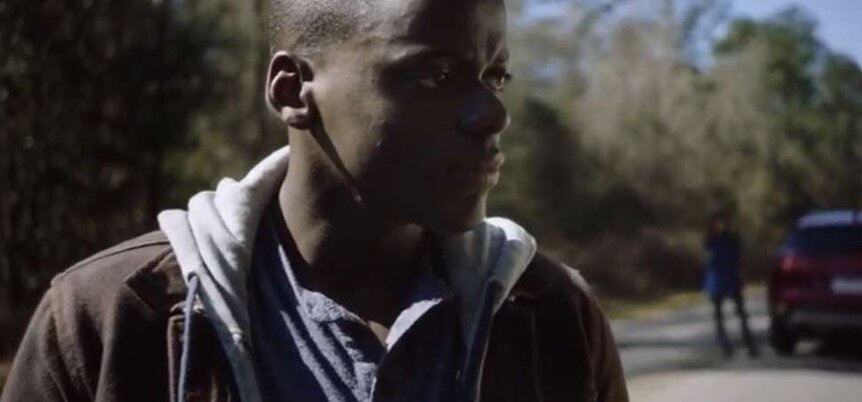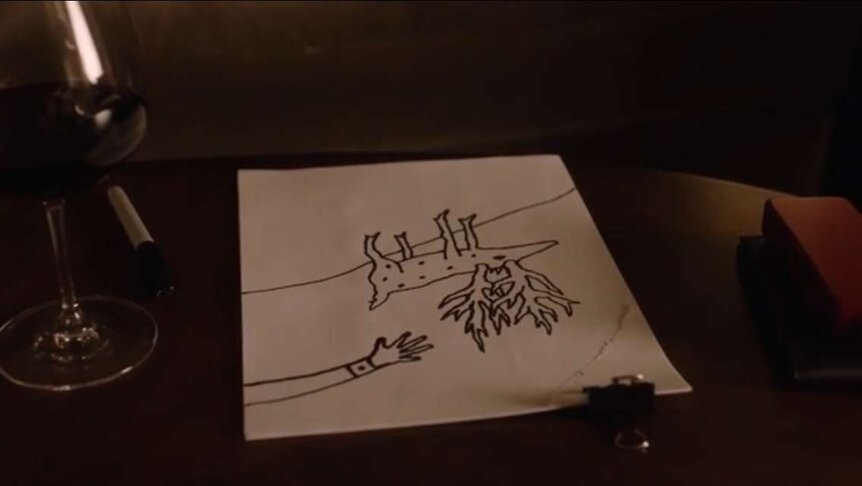Create a free profile to get unlimited access to exclusive videos, sweepstakes, and more!
Why stags are more than a masculine prop in horror
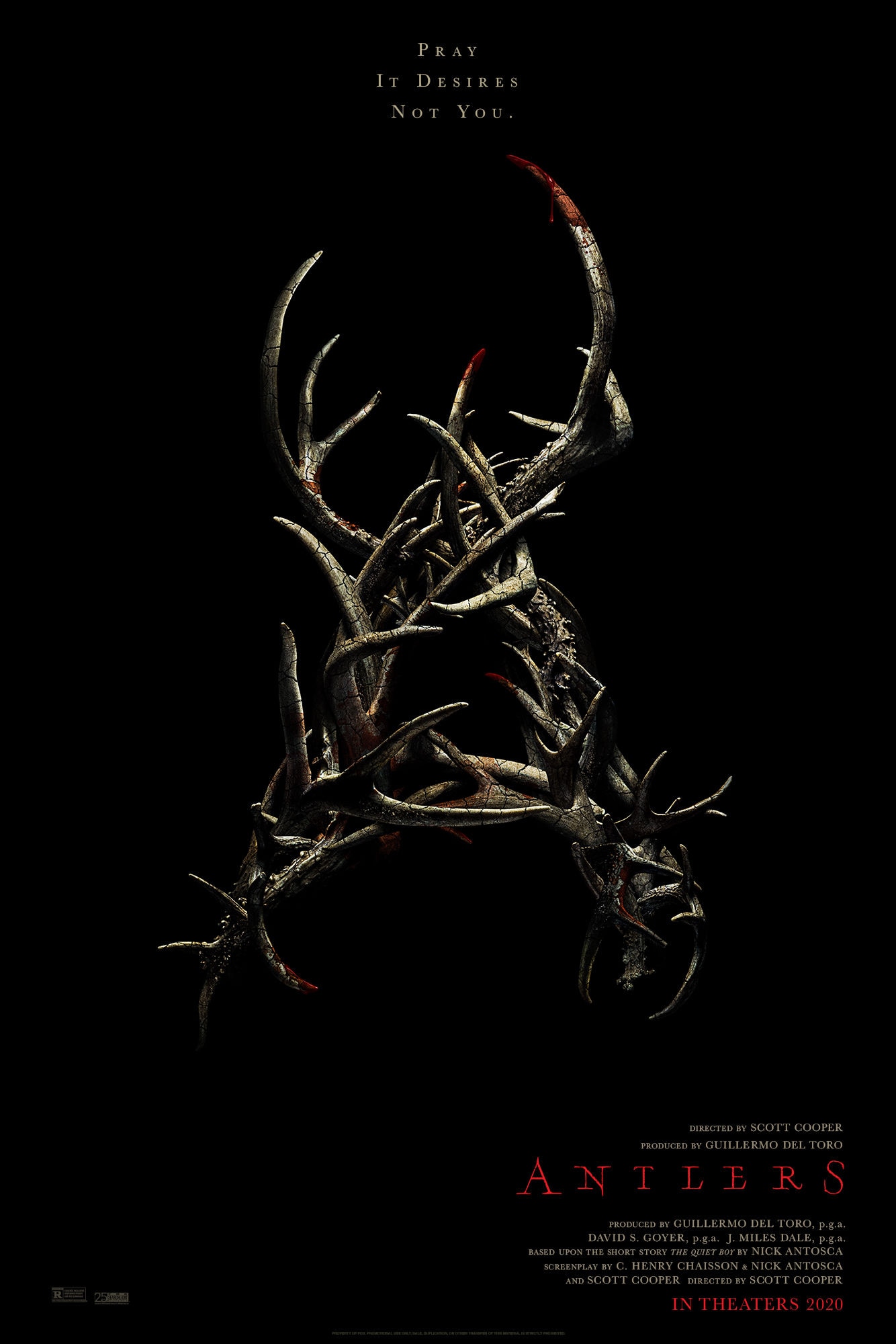
Nature plays more than a supporting part in scary movies, depicting a world that cannot — or should not — be conquered by humans. The wilderness offers up isolation and the unknown, which contributes to the scare factor. Allegory also plays a role in choices made by horror filmmakers, including how individual animals stand in for primal instincts, our relationship with the environment, and other inhabitants. Ever since a hunter killed Bambi's mother, deer have been a go-to representation of man versus nature. While the 1942 Disney animated classic isn't scary per se, the opening sequence sure is.
Dangerous and enigmatic, the link to masculinity goes beyond its classification as the male member of the species. Taxidermied stag heads are familiar cabin or country lodge decor that show off the spoils of a hunt and man's dominance over nature. Antlers are wielded as weapons not only by the animal but also by humans in horror. Additionally, members of the deer family tend to show up during a contemplative moment that reinforces the broader themes of the film or TV show. At times, the symbolic use of deer has been in danger of tipping into cliché, and yet there are recent examples that suggest retirement is not in the cards. In the right hands, the metaphor goes much deeper than a surface-level representation of a brooding man.
Antlers have become a go-to creepy prop that emphasizes an American Gothic aesthetic in television shows including True Detective, Riverdale, and Hannibal. The latter weaves these images throughout the series, which creator Bryan Fuller explained to The AV Club is a reflection of the pilot episode murder tableau: "Will sees Cassie Boyle impaled on the severed stag head in the field on that first day, it is actually incredibly traumatic for him."
This case introduces Will Graham (Hugh Dancy) to Hannibal Lecter (Mads Mikkelsen), which ties this animal to him. "This black stag of his nightmares that is really his first touch with the evil that Hannibal Lecter is capable of. In his mind, in the recesses of his subconscious, there is a connection being made," Fuller said.
Abigail Hobbs' (Kacey Rohl) father is a hunter, and he treats his human victims as he would the animals. Will's mind manifests an elk vision that later morphs into a Wendigo-like figure as a stand-in for the cannibalistic psychiatrist. It is no coincidence that Hannibal has a stag statue in his office — he uses it as a murder weapon in Season 1. It isn't just Hannibal that Will hallucinates as this animal; he sees his dog Winston as the stag he sleepwalks behind, and when one enters his classroom, in reality it is Jack Crawford (Laurence Fishburne) and Alana Bloom (Caroline Dhavernas). This correlation continued throughout all three seasons, which is a Jungian/Freudian use of this type of manifestation rather than the indigenous myth of a human-stag creature.
More than just a psychological or metaphorical symbol, the Wendigo is a story that is rooted in the atrocities inflicted on First Nation and Native American communities by colonizers. Forthcoming horror Antlers — the release date has been pushed to 2021 due to the global pandemic — tells the story of this monster in modern-day Oregon. Director Scott Cooper and producer Guillermo del Toro discussed the conception of this story during the recent Comic-Con@Home panel and the role of First Nations consultants Chris Eyre and Grace Dillon. "It was really important to me as someone who's white, Anglo-Saxon, Protestant, Episcopalian, if I'm going to discuss any Native American folklore, any themes that course through Native American life, I want to have people who know much more about it than I and I want to get it right," Cooper explained. And while the Wendigo is a monster metaphor for the English settlers who abused the land and cannibalized the resources, the roots run deep.
"Our images of the Wendigo, it didn't become just allegories. It actually started becoming very, very real," said Dillon. "Horror is contextual, always," del Toro explains, which underscores the role it still plays in depicting colonial scars and contemporary environmental abuse. Wendigos are just as relevant now, but knowing the historical significance is vital to the presentation; otherwise, it is an act of cultural cannibalization.
As an allegory, Get Out opts for more than one deer option to add layers to how Chris (Daniel Kaluuya) views his past trauma. The first sign of the guilt he has long harbored regarding the death of his mother comes when Rose (Allison Williams) hits a doe on the drive to her parents' rural home for the weekend. Appearing as if out of nowhere, there is no time to avoid the impact, and the lack of control foreshadows what is to come.
It is the first jump scare of the movie, which immediately puts the audience on edge, depicting the tension between city dweller Chris and the environment they are heading into. The image of the doe will stay with him throughout the movie, which we later find out is linked to his mother's hit-and-run death. He believes he could've saved her if he had only gone out to look for her when she didn't return home. The doe is a manifestation of his greatest regret that still haunts him as an adult.
After the third act twist reveals Rose's motives for this "meet the parents" weekend getaway, Chris wakes up tied to a chair in the Armitage family basement games room, where he locks eyes with a mounted stag head. In the annotated notes that appear in the Get Out script, Jordan Peele explains this is more than just a trophy analogy, as "the word 'buck' connotes strong male slave." This added layer of horrifying racist symbolism ties to the comments made to Chris throughout the party from the various members of the Red Alchemist Society. "Black is in fashion," one guest intones while others size up Chris' muscles and handshake in a predatory manner.
At this point, it reads like the Armitage family friends are overfamiliar while using microaggressions to assert dominance. The audience soon finds out that Chris is being auctioned off like a piece of prime meat to inhabit. He won't be mounted on a wall as such, but he is a trophy offered to the highest bidder. The specific link to slavery denotes that while this practice is now illegal, Black people are still being sized up based on physical prowess within a system built to oppress. The trauma and ripple effects of slavery stretch across the centuries via the power structures still in place.
Chris takes the buck off the wall and rams it into patriarch Dean Armitage's (Bradley Whitford) chest and throat, further emphasizing his quick thinking regarding the objects at his disposal while acknowledging the symbolism that runs throughout the mise-en-scène.
Sometimes a stag is just a stag, including the one that comes to life in a deranged Evil Dead II scene when the whole cabin — lamps and all — maniacally laughs, whereas the deer head that has fallen off the wall of the bank in the Twin Peaks pilot is a strange visual that adds to the off-kilter atmosphere that David Lynch favors. Laura Palmer's (Sheryl Lee) home decor includes a deer painting that prefaces the Season 1 scene in which Leland Palmer (Ray Wise) cuts his finger on the now-iconic headshot of his daughter.
Clues in Twin Peaks resemble peeling an onion, so while the painting could be part of the Pacific Northwest early ‘90s aesthetic, a moment in the 2017 revival supports the animal link. Now Deputy Director of the FBI Gordon Cole (David Lynch) doodles an image of a stag-like animal before seeing a vision of Laura Palmer. It could be a misdirect, but the use of disquieting deer visuals appears to reference Leland's unnatural action against his child.
"The construction of the city as metaphoric rapists of the country is an increasingly common one in horror," wrote Carol J. Clover in Men, Women, and Chain Saws, while discussing movies such as The Hills Have Eyes and I Spit on Your Grave that pit the two environments against one another. The role the stag plays in scary movies and TV doesn't always fall within the city-versus-country fault lines, but there is tension caused by an aggressor, whether a colonizer, racist, or killer. Because stag (and doe) images are a horror staple, it would be easy to dismiss this as a basic trope. Still, its function goes beyond mirroring masculinity or pitting man against nature. Hannibal and Get Out have set a high creative bar for using this allegory, and with the forthcoming Antlers exploring the indigenous origins of the Wendigo as "metaphor made flesh," it will now take more than a creepy mounted stag head to claim this horror trophy.
